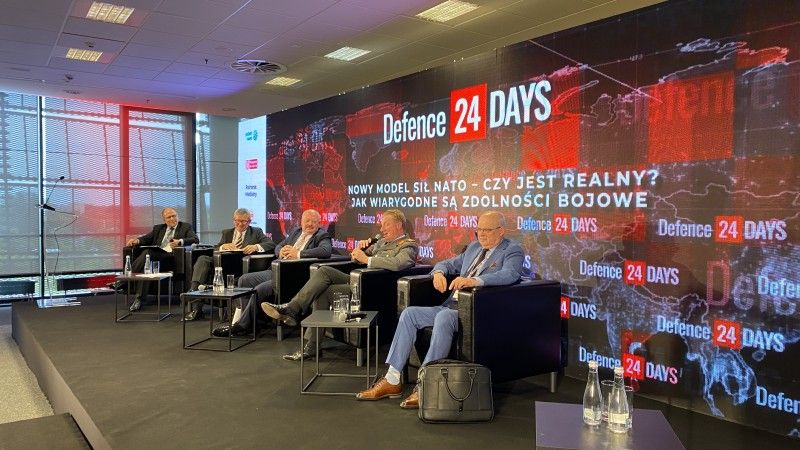Geopolitics
Defence24 Days: Is The New NATO Force Model Realistic?

During the “Is The New NATO Force Model Realistic? How Credible the Combat Capabilities Are” panel, the interlocutors were engaged in a conversation on the current situation in which NATO finds itself. They were also trying to define the key challenges ahead of the organization.
The discussion involved the following panellists:
- Lt. Gen. Pavel Macko, Slovakia;
- Lt. Gen. Jürgen-Joachim von Sandrart, HQ MNC NE;
- General (ret.) Waldemar Skrzypczak;
- gen. Sir James Everard, Former Deputy Commander NATO Europe.
Gen. Sir James Everard was the first person to take the floor. He noted that NATO, ever since 2008, has been receiving signals on the aggressive policy stance adopted by Russia. Starting from the invasion of Georgia, the 2014 Donbas war, and the Annexation of Crimea. Everard said that Europe needs to accept the fact that action taken by Russia, with the culmination coming in the form of the current situation in Ukraine, has entirely reshaped the security architecture.
He added that NATO, in a previous effort to create a deterrence policy that now turned into a new Force Model, needs to realize this is going to entail increased investment in the defence sector and the industry. Edvard said that the allies should not remain unalarmed, given the fact that Russia, most probably, is not going to be satisfied with just Ukraine. Hence, deterring a potential Russian strike shall be the baseline assumption for the new strategy.
Gen. (ret.) Waldemar Skrzypczak noted that NATO has not appreciated what Russia could do, looking at matters through the lens of the first phase of the War in Ukraine. Unfortunately, as he said, Russia managed to effectively mobilize its forces and draw conclusions from the errors made early in the process. This is the main reason why the Russian Forces took the initiative now.
He noted that we shall accept the possibility of the least optimistic, extremely drastic scenario happening, with the Russian Federation restoring its potential in 2.5 years, and making an attempt at attacking NATO. Skrzypczak said that attitude as such should mobilize us, not just to recover our capabilities, but also for NATO to gain significant advantage, in the anticipation of potential confrontation.
He indicates the lack of overt action aimed at gaining a technological advantage as a key challenge for the alliance - especially in the electronic warfare domain. He also points out that staffing the existing units shall also be taken into account, as they are not currently ready to engage in an open conflict. He emphasized the role of capabilities allowing for increasing troop survivability. The Western states seem to value the lives of their soldiers far more than the Russian Federation does.
Image: Wojciech Kozioł/Defence24.pl Ad.
Lt. Gen. Pavel Macko expressed an opinion that the new NATO force model is an adequate proposal, aligned with the current international situation. He also indicated the challenges ahead of the Alliance:
- Major growth of munitions and equipment resources;
- Increase of defence and military sustainability cost;
- Logistics tied to rapid transfer of force between the allies;
- Return to compulsory training, and higher mobilization levels in society.
He also listed individual trends that shall be taken into account, in the process of getting oneself ready before a potential conflict:
- Total defence profile in war;
- Digitalization of battlespace (drones, satellites, cyber-attacks);
- The ability to conduct large-scale maneuver would be limited;
- Kill-chain is faster than it used to be;
- The growing role of SOF on the battlefield.
Finally, Macko stressed that all of those changes would be impossible, with defence spending equivalent to 2% of GDP. Acceptance for higher spending levels should be possible.
These matters were summarized by Lt. Gen. Jürgen-Joachim von Sandrart. He said that whatever it is that we are willing to do, needs to be derived from analysis of the key adversary: Russia. One should remember, however, that as Russia has gained initiative in Ukraine, it can decide on numerous matters. Russia is making decisions on military movements, and the decision-making process is speedier than the one adopted by NATO. The Russian advantage also stems from the fact that Moscow cannot differentiate peacetime from wartime. Its actions are always political. In Von Sandart’s opinion, Russia is getting ready for a confrontation with NATO, in parallel to fighting the war in Ukraine, which means that the allies should focus on restoring their readiness as soon as possible, and at a level at which the Russian Armed Forces would not be able to penetrating penetrate our territory.